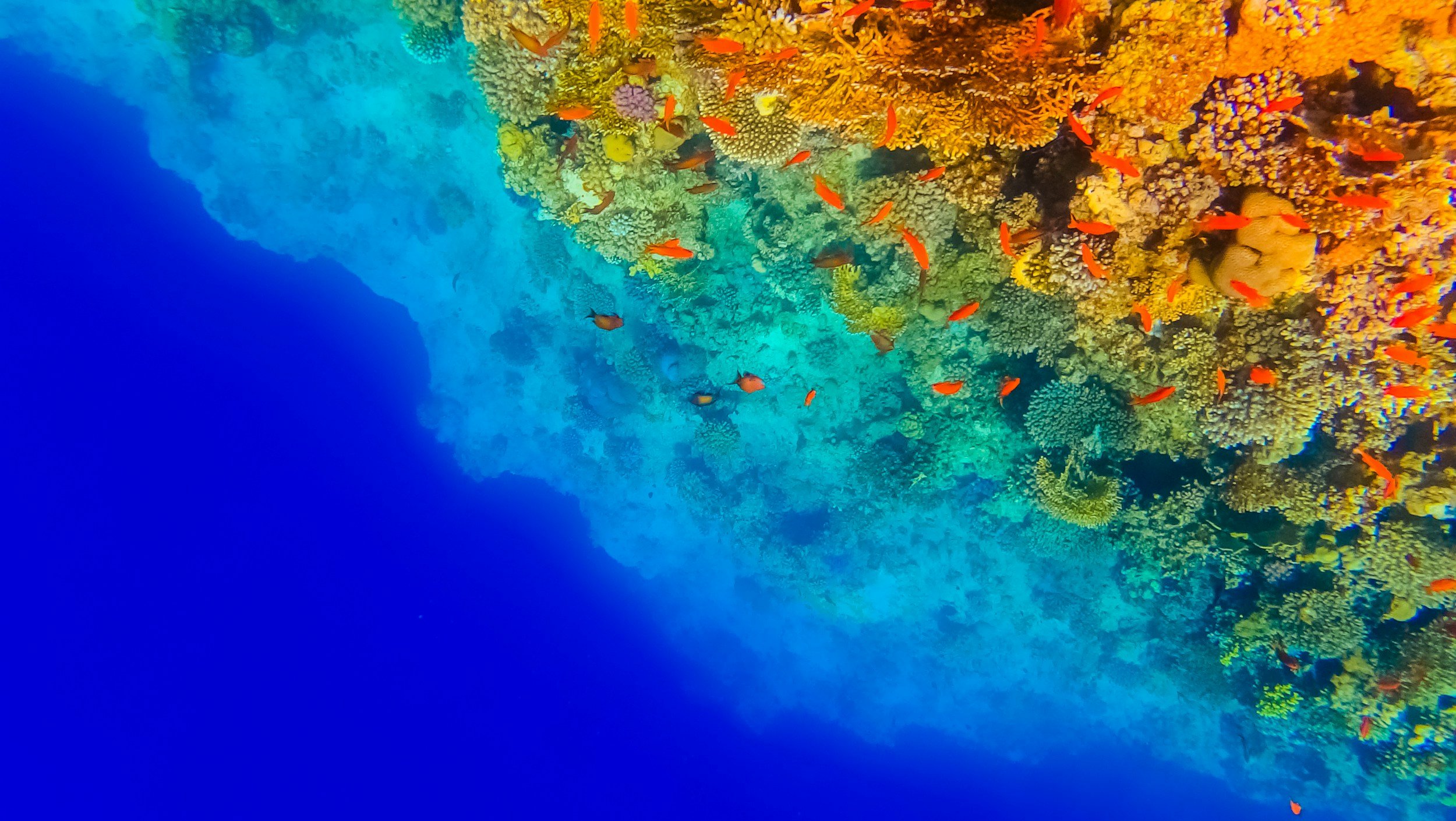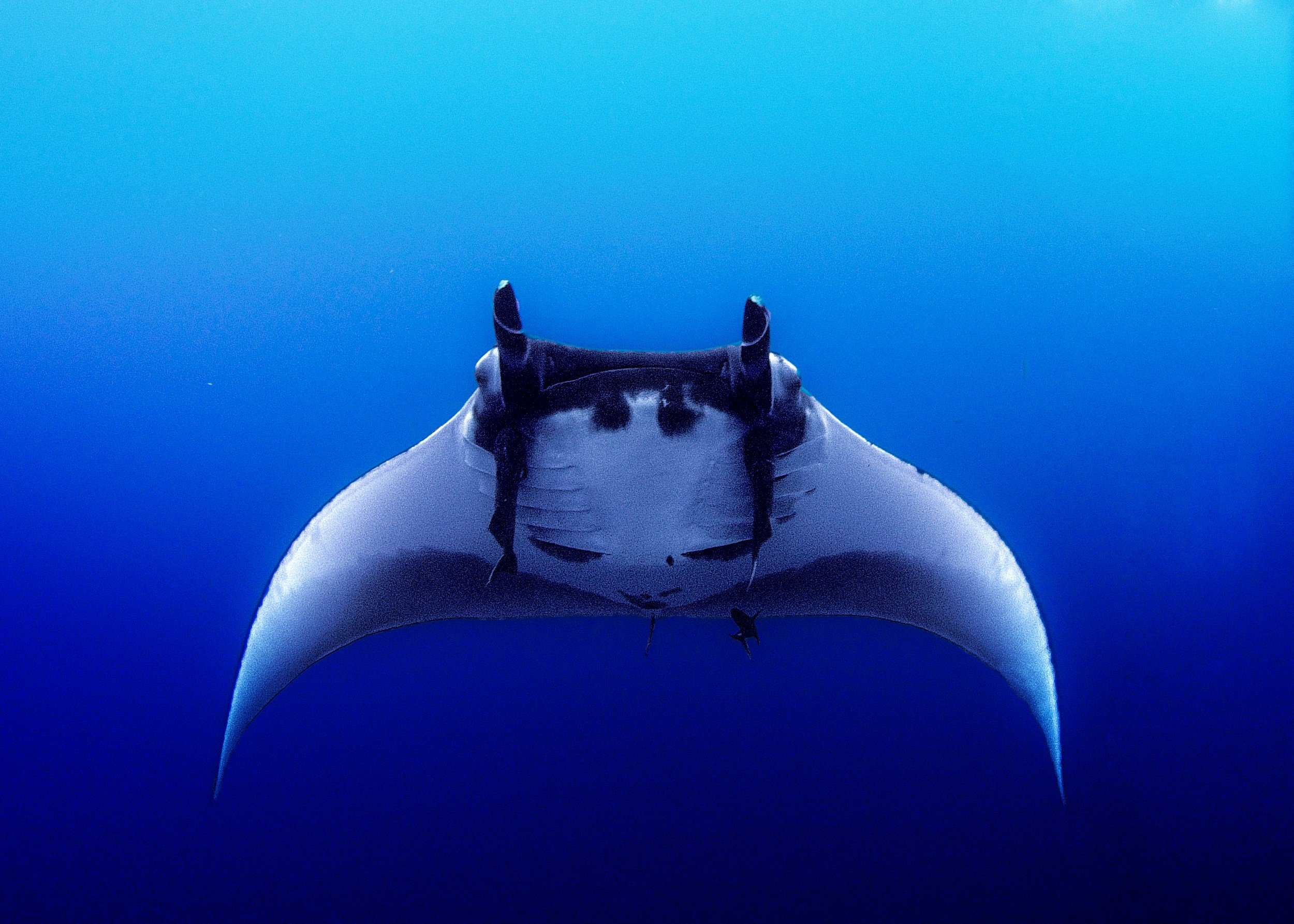
Ocean Ecosystems
83% of the global carbon cycle is circulated through the ocean, through its 500,000 - 10 million marine species, contributing enormously to climate regulation.
Roughly two-thirds of marine species, possibly more, have yet to be discovered, with almost 2,000 new species accepted by the scientific community each year. The ocean ecosystem is a distributed and connected source of health, wellbeing and activity through the many invaluable functions and services through its life: Provisioning services provide tangible goods—fish, shellfish and seaweed, mangroves timber, algae, minerals and chemicals. Regulating services play in balancing our environment; coastal protection, prevention of erosion, water purification and carbon storage. Cultural services are the non-material benefits —recreational, spiritual, intellectual derivations.
Oceans generate 50 percent of the oxygen, absorb 25 percent of carbon dioxide emissions and capture 90 percent of the excess heat generated by human activity. Weakened or lost ecosystems can increase vulnerability in the face of climate change and undermine the ability to implement adaptation and risk reduction, including those provided for in Nationally Determined Contributions (NDCs) under the Paris Agreement. At the heart of many of the world’s challenges: climate regulation, food, health, energy, materials; managing oceans first requires improving knowledge of marine biology, chemistry, physics, geology, archeology for preserving ecosystems.
Regional Biodiversity in New England’s Bays
Narragansett Bay and all the rivers that flow into it provide nursery and habitat for more than 60 species of fish and shellfish, more than 200 bird species and many marine mammals. The estuary, where salt and freshwater mixes, acts as a breeding ground, and a source of food and nutrients for species that range the coast. Organizations such as Narragansett Bay Estuary Program and Save the Bay are helping protect these species and their habitats with cleaner waters.
The coastal zone of Buzzards Bay is characterized by its salt marshes, eelgrass beds, tidal flats, rocky shores, and subtidal habitats. It’s a valuable resource for finfish, and a habitat for species that migrate north during the spring and summer. Buzzards Bay National Estuary Program, and Buzzards Bay Coalition are dedicated to research, educate and advocate for improving ocean health. Cape Cod Bay is home to many specialized habitats as well, including pitch pine/scrub oak woodlands, coastal dunes, maritime forests, Atlantic White cedar swamps, coastal plain ponds, sandplain grasslands, salt marshes, and coastal salt ponds. Before deploying ocean technologies, the first step is to protect local habitats and their inhabitants.
Key Attributes
-
Coral Reefs
Vibrant underwater ecosystems built by coral polyps, supporting immense marine biodiversity. They act as natural barriers against waves and storms, protecting coastlines from erosion.
-
Mangrove Forests
Coastal ecosystems of salt-tolerant trees with tangled roots that stabilize shorelines. They serve as nurseries for fish, filter pollutants, and store large amounts of carbon.
-
Deltas
Fertile, sediment-rich landforms at river mouths that create dynamic coastal habitats. They support diverse wildlife, fisheries, and protect inland areas from storm surges.
-
Wetlands
Waterlogged coastal ecosystems that filter pollutants and provide flood protection. They host a variety of species and act as crucial carbon sinks in the climate system.
-
Estutaries
Nutrient-rich transition zones where freshwater rivers mix with salty ocean water. These productive ecosystems support fisheries, migratory birds, and storm protection.
-
Salt-marshes
Coastal wetlands with salt-tolerant grasses that buffer storm surges and erosion. They filter runoff, support migratory birds, and store significant amounts of carbon.
-
Seagrasses
Submerged flowering plants forming underwater meadows that stabilize sediment. They enhance water clarity, provide shelter for marine life, and absorb carbon efficiently.
-
Beaches
Dynamic coastal landforms of sand or pebbles, shaped by tides, waves, and currents. They provide habitat for nesting species and act as recreational and economic hotspots.
-
Kelp Forests
Towering underwater forests of brown algae that shelter diverse marine species.
They absorb CO₂, support fisheries, and protect coastlines by dampening wave energy. -
Deep Sea
Vast ocean depths beyond the continental shelf, home to many unknown species. It contains unique ecosystems like hydrothermal vents, playing a key role in nutrient cycles.
-

Scenarios
Collectively imagining what the future of the oceans might looks like in different contexts.
-

Drivers
Macro-level drivers that create broad-reaching impact, and influence our present and future.
-

Trends
Emerging trends are specific areas of change that hold potential for significant impact.

Let’s Work Together
Join our ocean-tech network.



